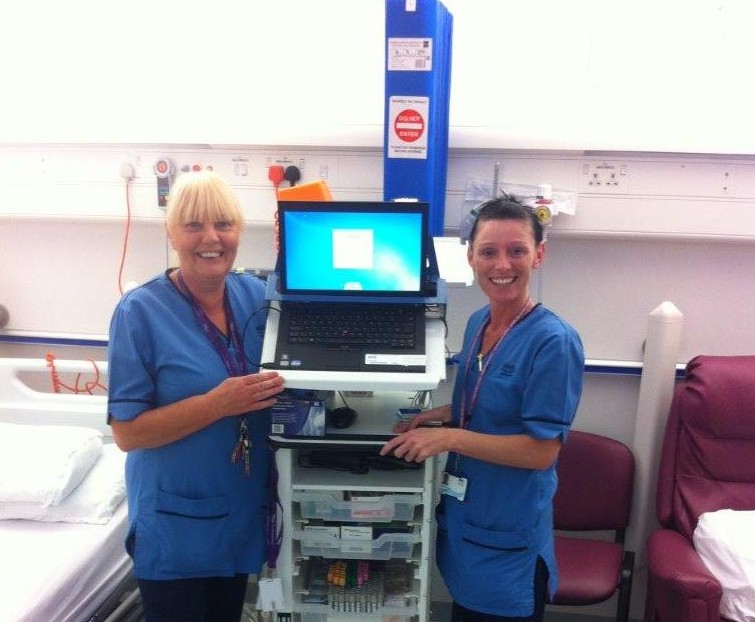The Role of Health IT in Improving Patient Care and Safety

Healthcare facilities play an essential role in ensuring that patients receive the necessary care and treatment to improve their health. However, violence has become a common issue in healthcare facilities, which can significantly affect patient safety and quality of care. It is crucial to have a plan in place to prevent violence in healthcare facilities.
A Plan to Prevent Violence in Healthcare Facilities

Violence in healthcare facilities refers to any form of aggression against healthcare workers or patients. It can include physical violence, verbal abuse, and sexual harassment. According to the Occupational Safety and Health Administration (OSHA), healthcare workers are four times more likely to experience workplace violence than workers in other industries.
The following are some strategies that healthcare facilities can implement to prevent violence:
Training and Education

One of the most effective ways to prevent violence in healthcare facilities is through training and education. Healthcare workers should be trained to recognize the signs of potential violence and how to respond appropriately to prevent escalation. Training should cover de-escalation techniques, communication skills, and conflict resolution strategies.
Additionally, healthcare facilities should provide education and training to patients and visitors on appropriate behavior while on the premises. Information on the consequences of violent behavior should also be provided.
Security Measures

Healthcare facilities should implement security measures that can prevent violence. These measures can include security cameras, metal detectors, and access control systems. The security personnel should be trained to recognize and address potential security threats. Alarm systems and lockdown procedures should also be in place.
Healthcare facilities may also consider partnering with law enforcement agencies to provide additional security.
Workplace Culture
Workplace culture can significantly influence the incidence of violence in healthcare facilities. Healthcare facilities should promote a culture of mutual respect, communication, and support. Employees should feel comfortable reporting incidents of workplace violence without fear of retaliation.
Additionally, healthcare facilities should have policies in place that address workplace violence. These policies should define what constitutes violence, the process for reporting incidents, and the consequences of violent behavior.
Abstract

The use of technology in healthcare has the potential to improve patient safety and quality of care. Information technology can facilitate communication, improve patient monitoring, and reduce the incidence of medical errors. This article explores the use of information technology in promoting patient safety.
Introduction
Medical errors are a significant source of harm to patients, and many of them are preventable. According to a study by the Institute of Medicine, medical errors contribute to between 44,000 and 98,000 deaths in the United States each year. Improving patient safety is, therefore, a crucial goal for healthcare providers.
One possible solution to improving patient safety is through the use of information technology. Information technology can improve patient monitoring, facilitate communication, and reduce the incidence of medical errors. This article explores the ways in which information technology can promote patient safety.
Content
Electronic Health Records
Electronic health records (EHRs) are digital versions of a patient’s medical record. EHRs can be accessed and shared by multiple healthcare providers, improving the coordination of care. EHRs can also reduce the risk of errors arising from illegible handwriting or incomplete documentation.
EHRs can also facilitate patient monitoring. Healthcare providers can set alerts and reminders for medications, appointments, and other aspects of care. Patients can also access their EHRs, allowing them to take an active role in their care.
Computerized Physician Order Entry
Computerized physician order entry (CPOE) is a computer system that allows healthcare providers to enter and manage patient orders electronically. CPOE can reduce the risk of errors arising from misinterpretation of handwritten orders or incomplete documentation.
CPOE can also improve communication between healthcare providers. Orders are automatically transmitted to the appropriate provider, reducing the risk of delays or missed orders.
Barcode Medication Administration
Barcode medication administration (BCMA) is a computerized system that uses barcodes to ensure that patients receive the correct medication and dosage. Medications are labeled with barcodes, and healthcare providers scan the barcode to verify the correct medication and dosage.
BCMA can reduce the risk of medication errors, such as administering the wrong medication or dose. It can also improve documentation by automatically recording medication administration.
Telehealth
Telehealth is the use of technology to deliver healthcare services remotely. Telehealth can improve access to care for patients who live in remote areas or have mobility issues. Telehealth can also reduce the risk of exposure to infectious diseases.
Telehealth can also facilitate the monitoring of patients with chronic conditions. Patients can use home monitoring devices to record vital signs, which can be transmitted electronically to healthcare providers. Healthcare providers can then adjust the patient’s care plan as needed.
Alerts and Reminders
Information technology can provide alerts and reminders to healthcare providers and patients. Providers can receive alerts for medication interactions, allergies, and other potential issues. Patients can receive reminders for medications, appointments, and other aspects of care.
Alerts and reminders can reduce the risk of errors arising from missed medication doses, missed appointments, or other issues. They can also improve communication between healthcare providers and patients.
Conclusion
Information technology has the potential to improve patient safety by reducing the incidence of medical errors, facilitating communication, and improving the coordination of care. Electronic health records, computerized physician order entry, barcode medication administration, telehealth, and alerts and reminders are some examples of how information technology can be used to promote patient safety. Healthcare providers should consider adopting these technologies to improve patient outcomes and quality of care.
Source image : www.scoop.it

Source image : qualitysafety.bmj.com

Source image : www.ebooksz.net

Source image : ehsdailyadvisor.blr.com

Source image : staffnews.nhsforthvalley.com





